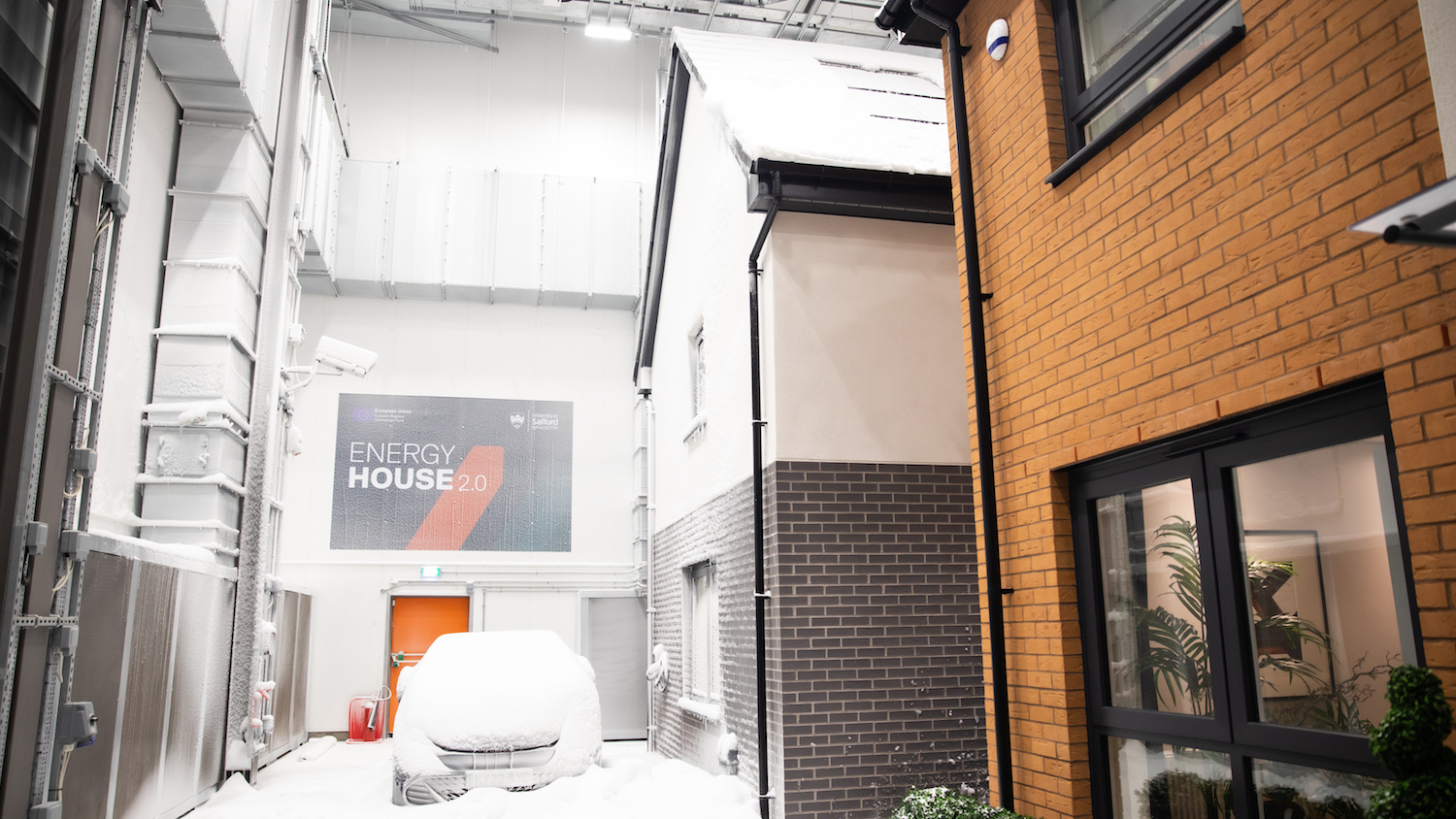
Digital models are being used to not only help test the energy efficiency of experimental homes, but to also to ensure the models themselves are robust.
The work is part of the Greater Manchester Innovation Accelerator Future Homes project, which has £3.5m of funding from Innovate UK.
It involves the University of Salford’s Energy House 2.0 test facility: a 1,050 sq m lab that tests the thermal efficiency (from -20 deg C to 40 deg C) of the full-size homes contained within it.
Barratt Developments (working in partnership with Saint-Gobain) and Bellway Homes built the homes, while RSK Group subsidiary Zero Energy Design (ZED) developed the digital twins for them.
ZED building physics consultant Alex Tilley said: “The University of Salford research lab’s HVAC allows conditions to go from -20 deg C to 40 deg C and the simulation of wind, rain, snow and solar radiance. It’s a true test of the efficiency of the materials and systems used in existing housing stock and those used in new builds and retrofitting. In these controlled conditions, we have a unique opportunity to test these houses.”
The homes have been subjected to fabric performance tests and an assessment of how well they retain heat to understand their true heat transfer coefficient.
The next phase of the research will assess the performance of a variety of low-carbon heating systems (based around air source heat pumps and electric infrared), comparing their performance in terms of energy efficiency and thermal comfort.
Simultaneous testing
The digital twins of the test houses enable simultaneous testing of the homes in a virtual environment while the real-life testing occurs. The digital versions have the same geometry, material properties and heating, hot water, lighting and ventilation systems.
Tilley said: “The ZED team has been conducting virtual tests of both homes alongside these lab-based physical tests. The ambition is to align the real data with the digitally produced virtual data to validate future digital modelling. So far, the calculations made through the digital twins have been within a small tolerance of the true results, demonstrating the accuracy of these kinds of tests.”
Any differences in data from the real and virtual environments will inform improvements to future modelling.
Don’t miss out on BIM and digital construction news: sign up to receive the BIMplus newsletter.














